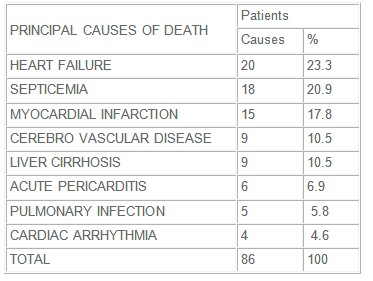Moreover, the increased facilities and advanced hemodialysis techniques have prolonged patients' survival which increased their risk of acquiring HCV. The extensive use of recombinant erythropoietin to correct renal anemia in hemodialysis patients resulted in a significant reduction in blood transfusions. However, previous studies have shown that de novo infections in single hemodialysis units may occur in the absence of other parenteral risk factors (57). It has been suggested that infection could be transmitted from patient to patient in the hospital, and there is now indirect evidence that HCV infection occurs among hemodialysis patients during repeated dialysis procedures, but not through the equipment, probably due to procedural errors (58).
We found high quantity of patients with hepatitis C positive virus but less than previous reported (60). In addition those cases were associated with longer duration of dialysis, older age, previous surgery, and multiple blood transfusions. Those agree with previous reports.(59,60) Qats and smoking, together with late referral and hypertension were the predominant causes of comorbidity. Over the last decades, more attention has been focuses on the potential nephrotoxicity of cigarette smoking (61,62). Smoking as little as a single cigarette is associated with a rise in systemic blood pressure, direct renal homodynamic effects leading to glomerular hyper filtration (63-66).
We think that habit of chewing Qats has to consider as an important risk factor in the progression of end-stage renal disease (ESRD) in patients with CKD. Despite improvements in dialysis care, the mortality of patients with end-stage renal disease (ESRD) in United States and Europe countries remains high, the reasons for this high mortality are probably related to the poor clinical conditions of patients at the beginning of the dialysis program and the association with comorbid factors (67-71) The results of our study are consistent with those. In summary, the morbidity and mortality of patients with end-stage renal disease (ESRD) are serious problems in Yemen as in the world.
Table 1. Principal etiologies.
ETIOLOGY Cases %
Hypertensive Nephropathy 80 23.9
Diabetic Nephropathy 65 19.5
Obstructive Nephropathy 52 15.6
Chronic Pyelonephritis 44 13.2
Chronic Glomerulonephritis 36 10.7
Polycystic Kidneys 22 6.6
Schistosomiasis (Bilharzias) 14 4.2
Unknown Causes 21 6.3
Total 334 100
Table 2. Etiologies and sex
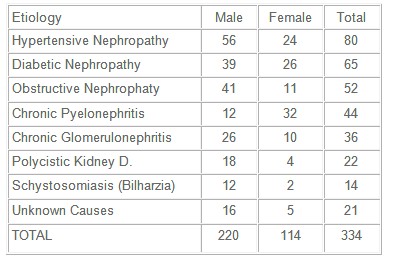
Table 3. Distribution according to age
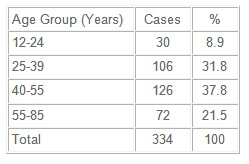
Age mean (Years) = 42. Age range (Years) =12-85.
Table 4. Clinical characteristics, biological parameters and procedures.
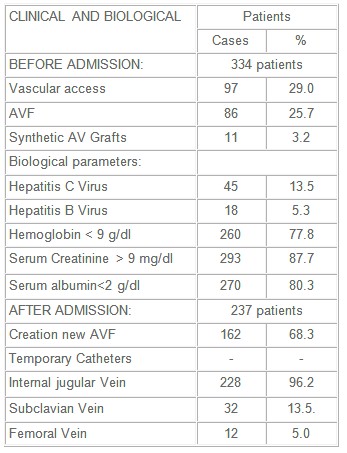
Table 5. Comorbid conditions. N=334
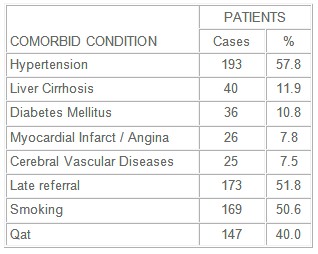
Table 6. Distribution by causes of death.
